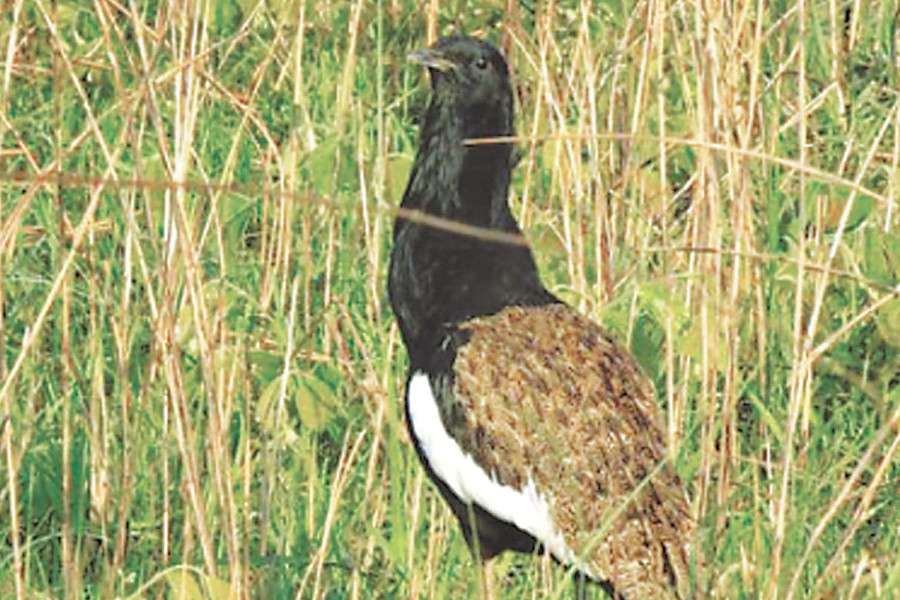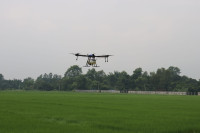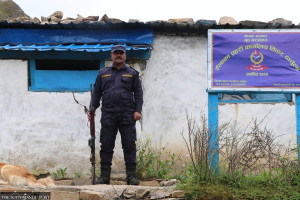Sudurpaschim Province
Shuklaphanta sees further decline in rare Bengal floricans
Surveyors say the actual number of the endangered bird may be slightly higher, although visible evidence points to steady population loss.
Bhawani Bhatta
The population of the critically endangered Bengal floricans, locally known as khar majur, continues to decline in Shuklaphanta National Park. According to park officials, only four Bengal floricans (Houbaropsis bengalensis)—three males and one female—were sighted during the latest count carried out from April 21 to April 28 this year. Five birds of the species—three males and two females—were recorded in the same habitat in 2024.
The bird count was conducted in the park’s grassland areas using a combination of vantage point and sweep methods. Conservation Officer Purushottam Wagle, who participated in the survey, stated that while only four individuals were directly spotted, the actual number could be slightly higher. "During the breeding season, males and females usually stay close together, so spotting one often implies the presence of the other," he explained.
The Bengal florican’s breeding season spans from March to May. During this period, males perform courtship displays—jumping and dancing to attract females—which makes these elusive birds more visible and easier to count. This is why, according to the conservationists, bird counts are regularly scheduled during this particular window. "The breeding season is the optimal time for observation. When we see a male, it’s likely a female is nearby, even if not immediately visible,” said Wagle.

Before starting the count, surveyors identify likely habitats within the grasslands and position themselves at “vantage points,” where groups of trained personnel monitor the area for four to five hours each in the early morning and late evening—times when the birds are most active and more likely to be seen. However, since not all Bengal floricans can be observed from vantage points alone, the sweep method has also been adopted in recent years to increase accuracy.
The sweep method involves forming a line of observers spaced 40-50 metres apart across the grassland. They move slowly forward, dragging a rope between them. This technique helps flush out birds hidden in the tall grass, increasing the likelihood of sightings. According to park officials, this combined method has been used consistently in recent years to produce more reliable estimates.
This year’s survey was a joint effort between the Bird Conservation Nepal and Shuklaphanta National Park, involving 19 technicians. The vast grassland area of Shuklaphanta was divided into six blocks to manage the count more effectively.
Shuklaphanta began a formal Bengal florican survey in 2013, when only seven individuals were recorded. Since then, the bird has remained extremely rare, and its population has fluctuated at low levels.
Experts attribute the declining numbers to the degradation of grassland habitats and insufficient food availability. As a result, the Bengal florican is now listed as a critically endangered species and is at risk of disappearing from the region entirely if urgent conservation actions are not implemented.




 16.12°C Kathmandu
16.12°C Kathmandu














